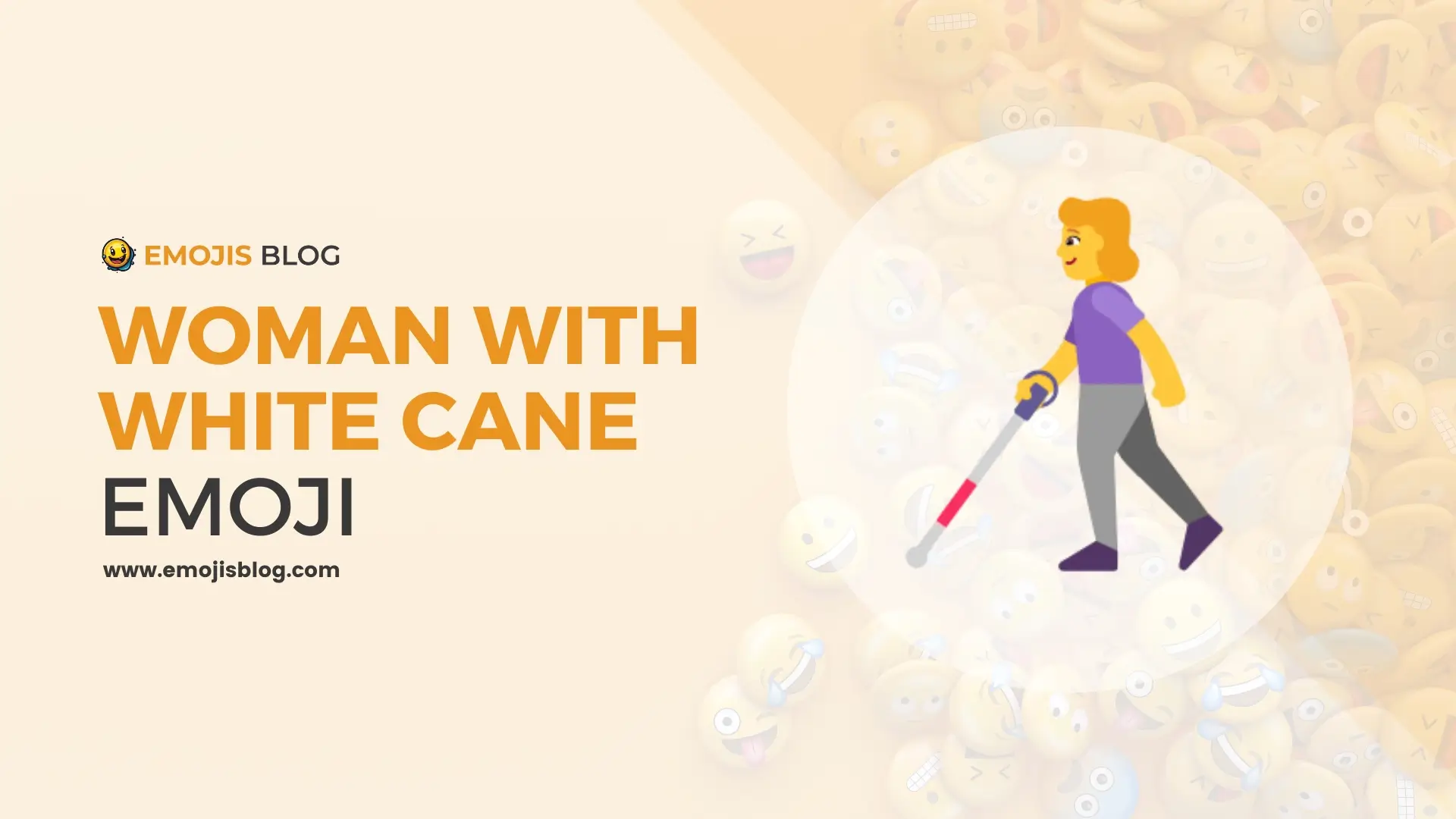What Does The Woman With White Cane Emoji Mean 👩🦯
👩🦯
Woman With White Cane Emoji Meanings 👩🦯
The “Woman with White Cane” emoji (👩🦯) represents a woman using a white cane, symbolizing blindness or visual impairment. It highlights the importance of accessibility tools and promotes awareness and inclusivity for individuals with disabilities. This emoji serves to empower visually impaired individuals by acknowledging their independence and presence in the digital space. It can be used to advocate for accessibility, share personal experiences, or metaphorically depict guidance and perseverance in overcoming challenges.
Technical Information
| Attribute | Description |
|---|---|
| Unicode | U+1F469 U+200D U+1F9AF |
| Name | Woman with White Cane |
| Introduced in Unicode | Unicode 12.0 (2019) |
| Introduced in Emoji | Emoji 12.0 (2019) |
| Code Points | U+1F469 (Woman) + U+200D (Zero Width Joiner) + U+1F9AF (White Cane) |
| Shortcodes | :woman_with_probing_cane: |
| Category | People & Body |
| Subcategory | Person-Symbol |
| Variations | N/A |
| Related Emojis | 👨🦯 (Man with White Cane), 🧑🦯 (Person with White Cane) |
| Platforms Supported | Apple, Google, Microsoft, Samsung, WhatsApp, Twitter, Facebook, etc. |
| Description | A woman shown walking with a white cane, used by individuals who are visually impaired. |
Understanding the Woman with White Cane Emoji 👩🦯
Emojis have become a universal language in digital communication, helping to convey emotions, activities, and identities in a compact form. One such emoji is the “Woman with White Cane” emoji (👩🦯), which is part of the broader set of accessibility-themed emojis introduced in recent years. This article delves into the meaning, significance, and use of this particular emoji.
Origin and Design
Unicode Standard
The “Woman with White Cane” emoji was approved as part of Unicode 12.0 in 2019 and added to Emoji 12.0 in the same year. It was introduced alongside other accessibility-related emojis to promote inclusivity and representation.
Visual Appearance
The emoji depicts a woman walking with a white cane, a tool commonly used by individuals who are blind or visually impaired. The design typically shows a woman with a neutral expression, wearing casual clothes, and holding a white cane in front of her, indicating her navigation through the environment.
Symbolism and Representation
Raising Awareness
The “Woman with White Cane” emoji serves to raise awareness about blindness and visual impairments. It highlights the importance of accessibility tools and the need for a more inclusive society where individuals with disabilities are recognized and supported.
Empowerment and Independence
The white cane is a symbol of independence for many people who are visually impaired. It represents their ability to navigate the world confidently and independently. The inclusion of this emoji in digital communication empowers those who use white canes, giving them visibility and a voice in the digital space.
Usage in Digital Communication
Inclusivity in Messaging
Using the “Woman with White Cane” emoji in messages and social media posts can demonstrate support for the visually impaired community. It can be used in various contexts, such as advocating for accessibility features, sharing stories of individuals with visual impairments, or simply promoting inclusivity.
Contextual Meanings
While its primary representation is related to visual impairment, the emoji can also be used more broadly to symbolize guidance, exploration, or the journey of overcoming challenges. For example, someone might use it metaphorically to represent navigating through difficult situations with determination.
Related Emojis and Variants
Gender Variants
In addition to the “Woman with White Cane” emoji, there is a “Man with White Cane” emoji (👨🦯) and a “Person with White Cane” emoji (🧑🦯), ensuring that different gender identities are represented.
Other Accessibility Emojis
The introduction of the “Woman with White Cane” emoji was part of a broader initiative to include more accessibility-related emojis. Other examples include the “Ear with Hearing Aid” (🦻), “Guide Dog” (🐕🦺), and “Person in Motorized Wheelchair” (🧑🦼). These emojis collectively promote the representation of individuals with disabilities.
Conclusion
The “Woman with White Cane” emoji (👩🦯) is more than just a symbol; it is a powerful tool for raising awareness, promoting inclusivity, and empowering individuals with visual impairments. Its inclusion in the Unicode Standard marks a significant step towards a more diverse and representative digital world. As we continue to use and recognize such emojis, we contribute to a culture of understanding and support for all individuals, regardless of their abilities.

